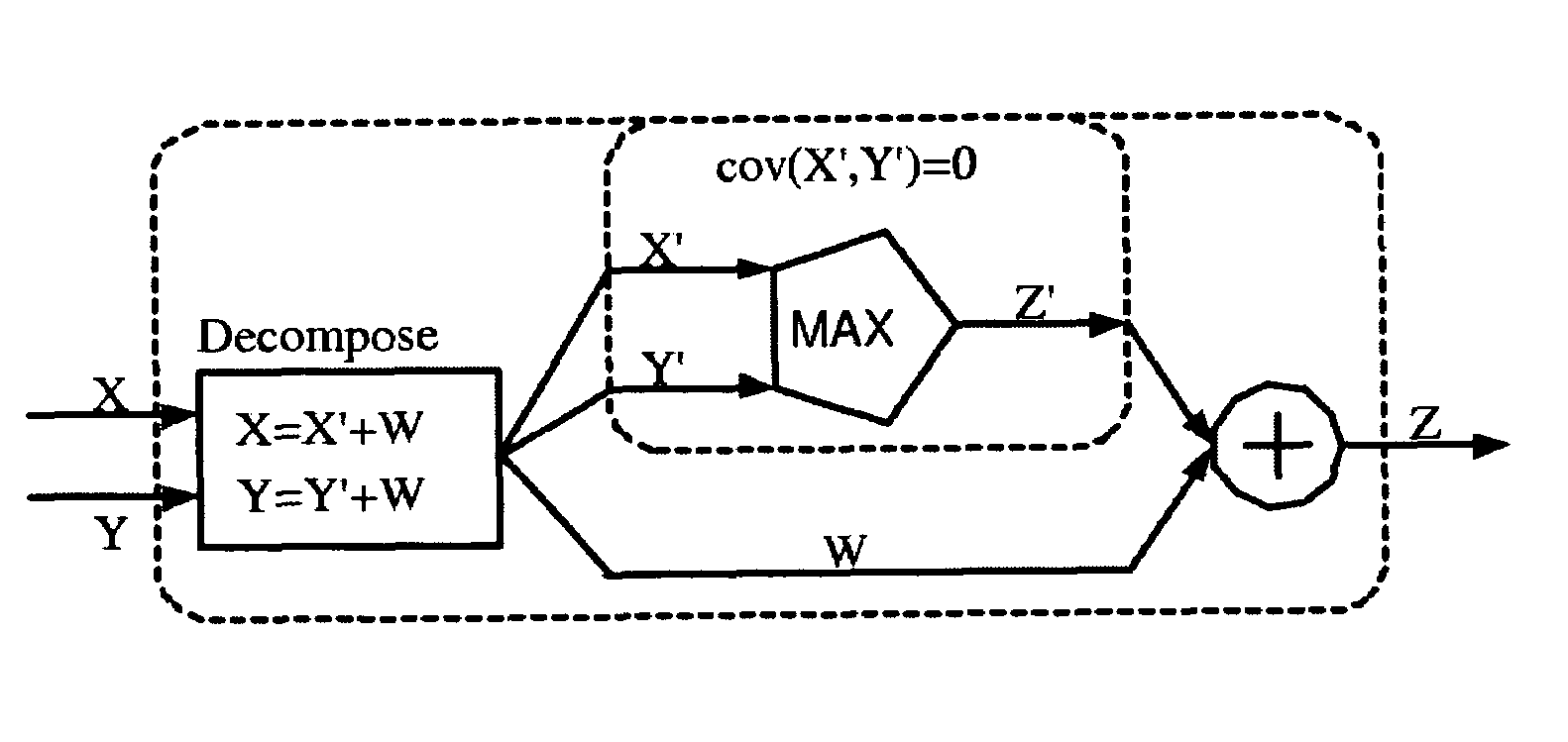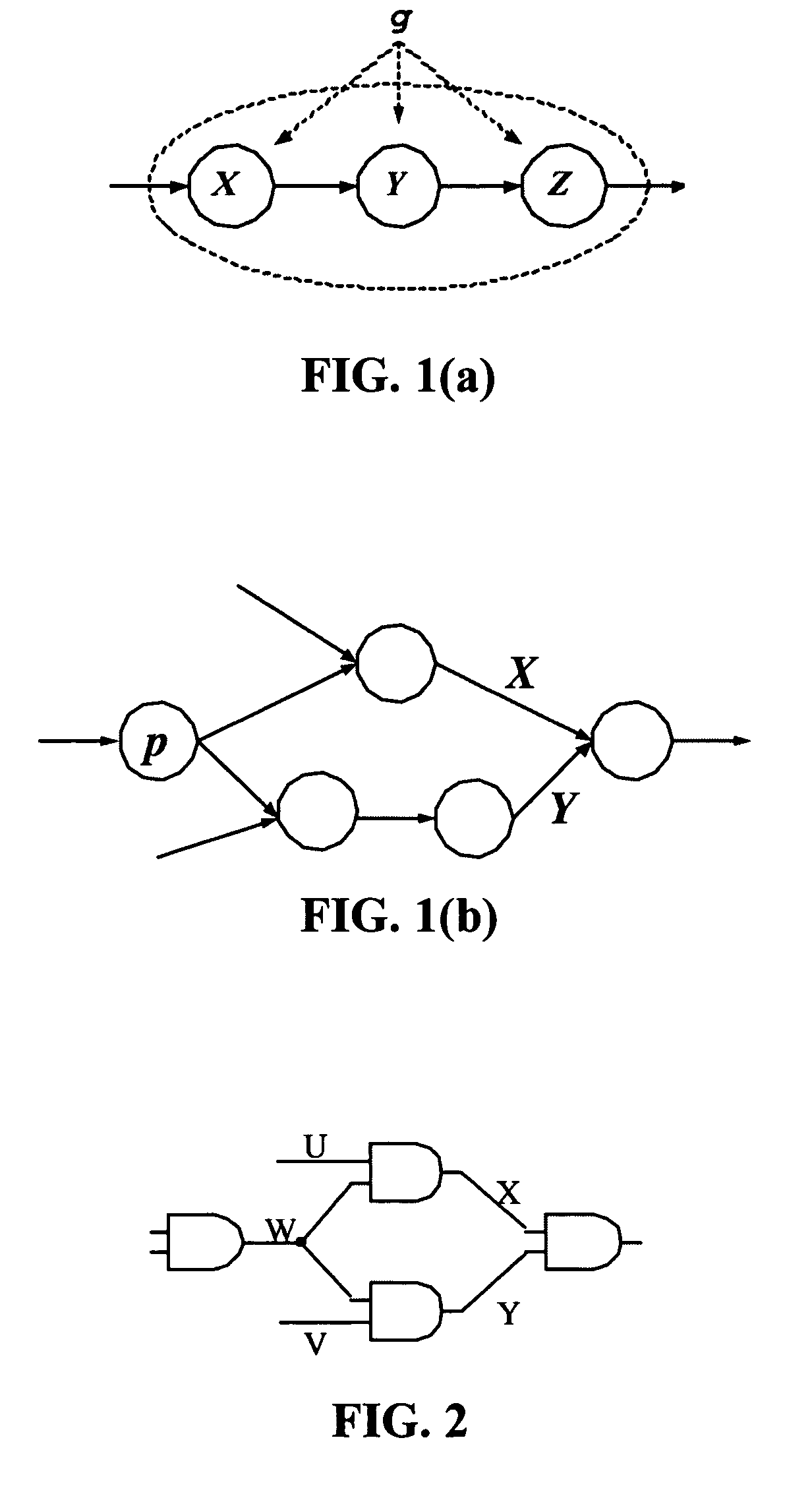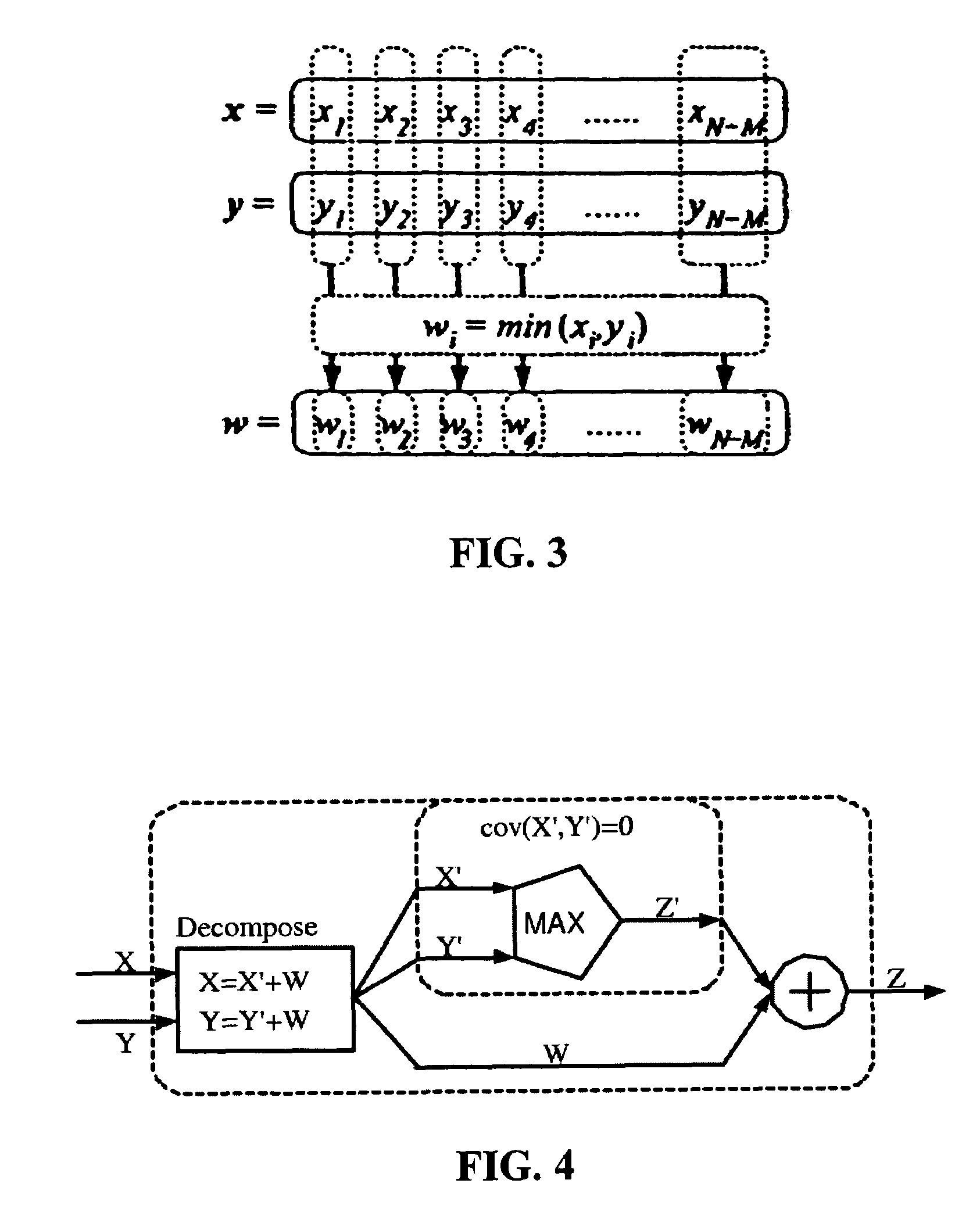Efficient statistical timing analysis of circuits
a statistical timing analysis and integrated circuit technology, applied in the field of statistical timing analysis of integrated circuits, can solve the problems of increasing noise, increasing timing variations, and timing parameters to deviate from their designed value, so as to improve computational speed, reduce storage burden, and increase error
- Summary
- Abstract
- Description
- Claims
- Application Information
AI Technical Summary
Benefits of technology
Problems solved by technology
Method used
Image
Examples
Embodiment Construction
.
[0029]Initially, Section 1 of the Detailed Description section describes how the nonlinear MAX operation can be approximated by a weighted linear mixing operator which performs a linear supposition of its inputs, and which has the moments of its output matched to those of the MAX operation. The preferred form of this operation is U=ρX+(1−ρ)Y+ζ, wherein X and Y are the inputs and ρ and ζ are constants chosen such that U has matching moments with Z=MAX(X,Y). Whereas Gaussian inputs to the MAX operator will result in a nonlinear / non-Gaussian output which lacks any information regarding correlation between the inputs, the linear mixing operator proposed here conveniently retains both linearity and correlation information, and it is therefore preferred for use in the steps / methods discussed below.
[0030]Section 2 of the Detailed Description then discusses how a modified version of the traditional canonical timing model, referred to herein as the Extended Canonical Timing Model, can be us...
PUM
 Login to View More
Login to View More Abstract
Description
Claims
Application Information
 Login to View More
Login to View More - R&D
- Intellectual Property
- Life Sciences
- Materials
- Tech Scout
- Unparalleled Data Quality
- Higher Quality Content
- 60% Fewer Hallucinations
Browse by: Latest US Patents, China's latest patents, Technical Efficacy Thesaurus, Application Domain, Technology Topic, Popular Technical Reports.
© 2025 PatSnap. All rights reserved.Legal|Privacy policy|Modern Slavery Act Transparency Statement|Sitemap|About US| Contact US: help@patsnap.com



